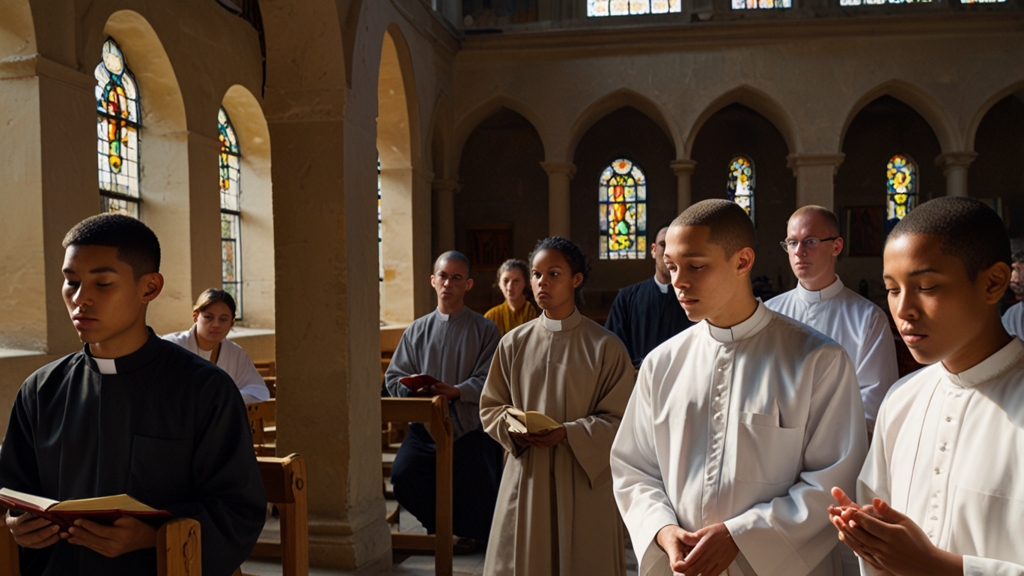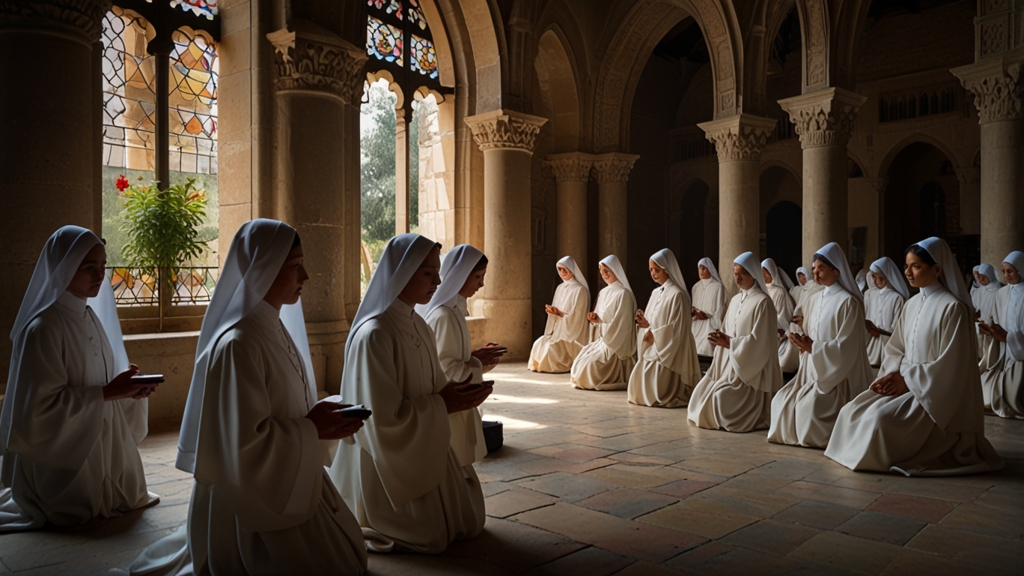In a recent webinar titled Safeguarding Young People in Consecrated Life: Experiences, Challenges, and the Way Forward, Fr. Noel Nwadike, SJ, delivered a powerful and profoundly human presentation on the realities young people face in religious life. The webinar was a heartfelt exploration of the joys, struggles, and traumas experienced by young people in consecrated life. Fr. Nwadike emphasized the importance of moving beyond theoretical discussions to truly listen, understand, and act justly in protecting the vulnerable.
A Personal Note: Beyond Theory
Fr. Nwadike began by acknowledging the abundance of resources available for safeguarding, from books and articles to papal encyclicals and apostolic letters. However, he stressed that these invaluable resources are not enough. What is needed is a deeper, more human approach—one that listens to the lived experiences of young people in consecrated life. His presentation was built on actual encounters with young people and victims of abuse, who shared their voices, stories, and realities.
He also issued a gentle reminder to survivors of abuse, urging them to prioritize self-care. If the webinar triggered painful memories, he encouraged them to seek help from trusted individuals, counsellors, or spiritual directors.
Why Focus on Safeguarding Young People in Consecrated Life?
The webinar focused on safeguarding young people in consecrated life rather than all consecrated persons. Fr. Nwadike explained that while it is imperative to protect all vulnerable individuals, young people entering religious life face unique vulnerabilities and challenges. By addressing their specific needs, formators and religious leaders can design formation programs that protect them from various forms of abuse during their training.

Who Are the “Young People” in Consecrated Life?
Young people entering consecrated life are typically in their late teens to early 30s, though some communities may accept older vocations. Canon Law does not explicitly define “young people” by age but provides guidelines for admission to consecrated life. The stages of formation—postulancy, novitiate, temporary vows, and perpetual profession—are critical periods where young people are particularly vulnerable.
Positive and Negative Experiences in Consecrated Life
Fr. Nwadike highlighted young people’s positive and negative experiences in consecrated life. On the positive side, many find their vocation joy, purpose, and fulfilment. They experience spiritual growth, deep bonds of community life, and support from their superiors and formators.
However, there are also significant challenges. Many young people feel misunderstood, isolated, and unsupported. They face difficulties adjusting to religious life, mainly when generational gaps exist between them and their formators. Abuse—emotional, physical, spiritual, and sexual—is a pervasive issue, often exacerbated by power imbalances and a lack of education on healthy boundaries.
Vulnerabilities That Make Young People Susceptible to Abuse
Fr. Nwadike identified several vulnerabilities that make young people in consecrated life more susceptible to abuse and exploitation:
- Dependency: A strong need for approval or validation can lead to dependency on mentors or superiors.
- Low Self-Esteem: Individuals with low self-worth may struggle to assert boundaries or recognize abusive behaviour.
- Excessive Trust or Naivety: Young people may fail to recognize manipulative or abusive behaviour due to their idealism.
- Conflict Avoidance: Fear of confrontation can prevent young people from speaking out against inappropriate behaviour.
- Perfectionism: A desire to meet high spiritual or moral standards can make young people susceptible to manipulation.
- Emotional Immaturity: Lack of emotional resilience can leave young people vulnerable to exploitation.
- History of Trauma: Those with a history of abuse may unconsciously gravitate toward relationships that replicate patterns of exploitation.
- Loneliness or Isolation: Young people who feel disconnected may seek validation from superiors or peers, making them more susceptible to grooming.
- Insecurity About Their Vocation: Uncertainty about their calling can lead young people to conform to authority figures at the expense of their well-being.

A Case Study: Sexual Abuse in Consecrated Life
Fr. Nwadike shared a harrowing case study of Sr. Alexa, a 24-year-old temporary professed sister who reported a sexual assault and attempted rape to her major superior. Instead of receiving support, Sr. Alexa was told to forgive the perpetrator and keep quiet to protect the congregation’s reputation. The superior’s response normalized the abuse, prioritized institutional reputation over justice, and failed to uphold safeguarding responsibilities.
Evaluating the Superior’s Response
Fr. Nwadike critically evaluated the superior’s response, highlighting several shortcomings:
- Lack of Empathy and Support: The superior’s response, which minimized the incident and failed to provide emotional or psychological support, is a stark reminder of the need for empathy and support in such situations. This emphasis on empathy and support is intended to evoke a sense of compassion and care among the audience.
- Normalization of Abuse: The statement that “men generally behave like that” perpetuates a culture of silence and impunity.
- Prioritization of Institutional Reputation: The superior discouraged reporting the abuse, placing the congregation’s reputation above the victim’s well-being.
- Power Dynamics and Intimidation: The reference to the abuser’s power and connections served to intimidate the victim.
- Failure to Uphold Safeguarding Responsibilities: The superior failed to take immediate action, report the abuse, or create a safe environment for the victim.
The Way Forward: Safeguarding the Dignity and Vocation of Young People
Fr. Nwadike outlined several steps to improve safeguarding in religious institutes:
- Training in Safeguarding and Trauma-Informed Care: Leaders must understand the dynamics of abuse and the importance of safeguarding.
- Precise Reporting Mechanisms: Establish accessible procedures for reporting abuse.
- Accountability and Transparency: Allegations must be reported to appropriate authorities, and investigations must be conducted.
- Support for Victims: Provide counselling, spiritual guidance, and other resources for healing.
- Challenging Harmful Attitudes: Dismantle attitudes that normalize abuse or prioritize institutional reputation over justice.
Protective Measures in Safeguarding Young People in Consecrated Life
Fr. Nwadike emphasized the need for protective measures, including:
- Promoting a culture where individuals feel safe to report abuse without fear of retaliation.
- Encouraging psychological screening and support for those entering consecrated life.
- Fostering open communication and accountability within religious communities.
- Providing education on healthy relationships, boundaries, and abuse prevention.

Conclusion: A Call to Conversion and Vigilance towards Safeguarding Young People in Consecrated Life
Safeguarding in consecrated life is not just a legal or procedural obligation but a profoundly spiritual responsibility. It reflects the Gospel’s call to protect the dignity of every person, especially the vulnerable. Fr. Nwadike concluded by urging religious leaders to take their safeguarding responsibilities seriously, ensuring that young people are protected, abuse is prevented, and victims are cared for.
The webinar was a powerful reminder that safeguarding requires ongoing conversion, humility, and a commitment to justice and healing. This call to conversion and vigilance is intended to motivate and inspire the audience to remain committed to the cause of safeguarding in their respective roles.
Some images are AI generated




